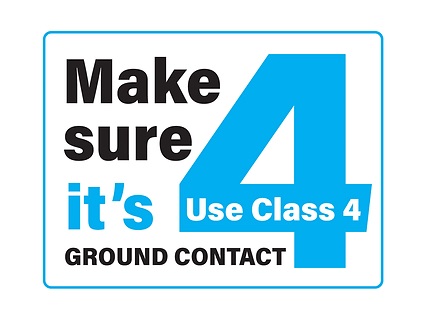Understanding Treated Timber Use Classes
Reading time: 5 minutes
What is considered treated timber?
Preservative treated timber, also known as pressure-treated timber, is a type of wood that has undergone a preservation process to enhance its durability and resistance to fungal decay, insects, and other environmental factors.
By choosing the right use class of preservative-treated wood, you can ensure the desired service life of your construction projects while maintaining resistance to decay and insect damage.
Why is choosing the right timber important?
Because internal and external environments are very different, choosing the right timber use class could be the difference between your construction project being a long-lasting success and failing to withstand its purpose. The product’s life span and the structural safety of the application could be compromised if the right level of treatment is not used. So it’s important to bear in mind that wood which has been treated for indoor use will not be suitable for outdoor use, and vice versa.
BS 8417:2024, which is the British Standard for the preservation of wood - code of practice, gives guidance and ‘recommendations for determining the need for treatment and specifying the type of treatment’. This is to ‘provide protection against biodeterioration in certain specified end-use situations and recommends levels of penetration and retention of preservative’.
What are the different levels of treated timber?
Treated timber is classified into various levels based on the amount of protection it offers against decay and insect infestation. The levels available in the UK are: Use Class 2, Use Class 3, and Use Class 4. Each timber use class corresponds to a specific level of treatment and recommended applications.
What is Class 4 timber treatment?
Class 4 timber treatment (also known as UC4) refers to a high service life against fungal decay and insect attack. It involves the impregnation of preservatives deep into the wood fibres under high pressure. This process ensures the preservatives penetrate the wood effectively, providing long-lasting resistance to rot, termites, and other wood-damaging organisms.
UC4 treated timber is typically used in external applications that are in contact, or in very close contact, with the ground or fresh water.
Suitable applications for UC4 timber
-
Agricultural timbers
-
Retaining walls
-
Playground equipment
-
Decking posts
-
Deck joists and sub-structures
Don’t forget: When cross cutting, notching or boring treated timber, it is essential practice to apply an end grain preservative treatment to newly exposed areas - this will help maintain the integrity of the protection.
What is Class 3 timber treatment?
Class 3 wood treatment (also known as UC3) provides a moderate level of protection against decay and insect damage. It involves the application of preservatives using pressure and vacuum techniques. While it offers good resistance to normal weathering conditions, direct ground contact should be avoided.
There are two types of UC3 timber - coated and uncoated, and both are used for external above-ground applications. Where UC3 timbers are expected to maintain a good visual appearance throughout their desired service life it is recommended a decorative coating should be applied and maintained in addition to the UC3 treatment. Examples of UC3 Coated applications are given below.
Suitable applications for UC3 uncoated (UC3u) timber
-
Decking boards and landscaping timbers (not in ground contact)
-
Garden fence rails and boards
-
Cladding (including battens) and fascias
-
Agricultural timbers (not in ground or manure contact)
Suitable applications for UC3 coated (UC3c) timber
-
Decking boards (not in ground contact)
-
Cladding
-
Roof soffits and fascias
-
Bargeboards
-
Valley gutter timbers
-
Specialist external joinery (such as window frames and doors)
-
External load bearing timbers
What is Class 2 timber treatment?
Class 2 timber treatment (also known as UC2) offers a limited level of protection against decay and insect infestation. It involves the application of preservatives using pressure and vacuum techniques but to lower retentions than for UC3 or UC4 applications.
UC2 treated wood is only suitable for internal applications with no risk of wetting, with the exception of unexpected plumbing or roof leaks. It is not recommended for ground contact or continuous exposure to moisture.
Suitable applications for UC2 timber:
-
Tiling battens
-
Framing and roof timbers
-
Internal joists
-
Sole plates
And, as mentioned earlier, it's important to remember when cross cutting, notching or boring treated timber, it’s best practice to apply an end grain preservative treatment to newly exposed areas to help maintain the integrity of the protection.
Disclaimer: The information provided in this article about treated timber classes is intended for guidance purposes only. It is important to consult with professionals and adhere to local regulations for specific applications and treatments. The accuracy and applicability of the information may vary based on individual circumstances.











